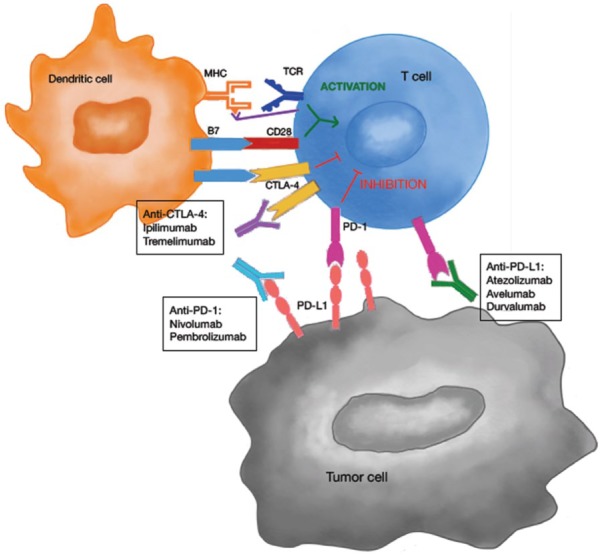Figure 1.
Targeting the CTLA-4 and PD-(L)1 pathways with immune checkpoint inhibitors. Mechanism of action: T-cell activation requires a ‘two signal’ mechanism: the recognition and engagement of the TCR with antigenic tumour peptides on the MHC presented by the APCs, and a co-stimulatory signal via B7 and CD28 binding. CTLA-4 acts as a negative receptor that inhibits the activation of T-cells regulating the immune response. By blocking this receptor with drugs such as ipilimumab and tremelimumab, antitumour activity is enhanced. In the effector phase, once the T-cells have been activated, binding of the PD-1 receptor with its ligand (PD-L1 or PD-L2), expressed on tumour cells, results in the inhibition of T-cells in the tumour microenvironment. By blocking this receptor with drugs such as nivolumab, pembrolizumab, atezolizumab or durvalumab, T-cells can be activated against cancer cells.
APC, antigen-presenting cell; CTLA-4, cytotoxic T-lymphocyte antigen 4; MHC, major histocompatibility complex; PD-L1, programmed death ligand 1; TCR, T-cell receptor.

